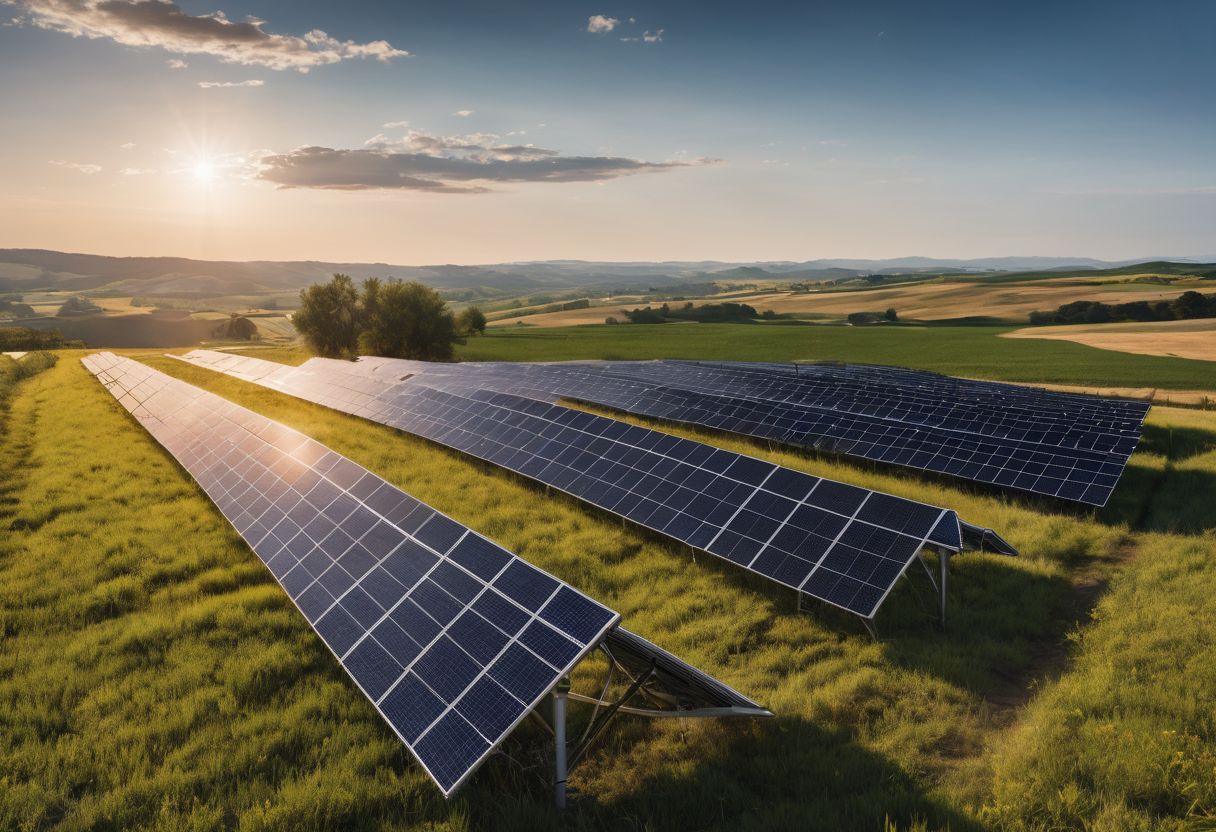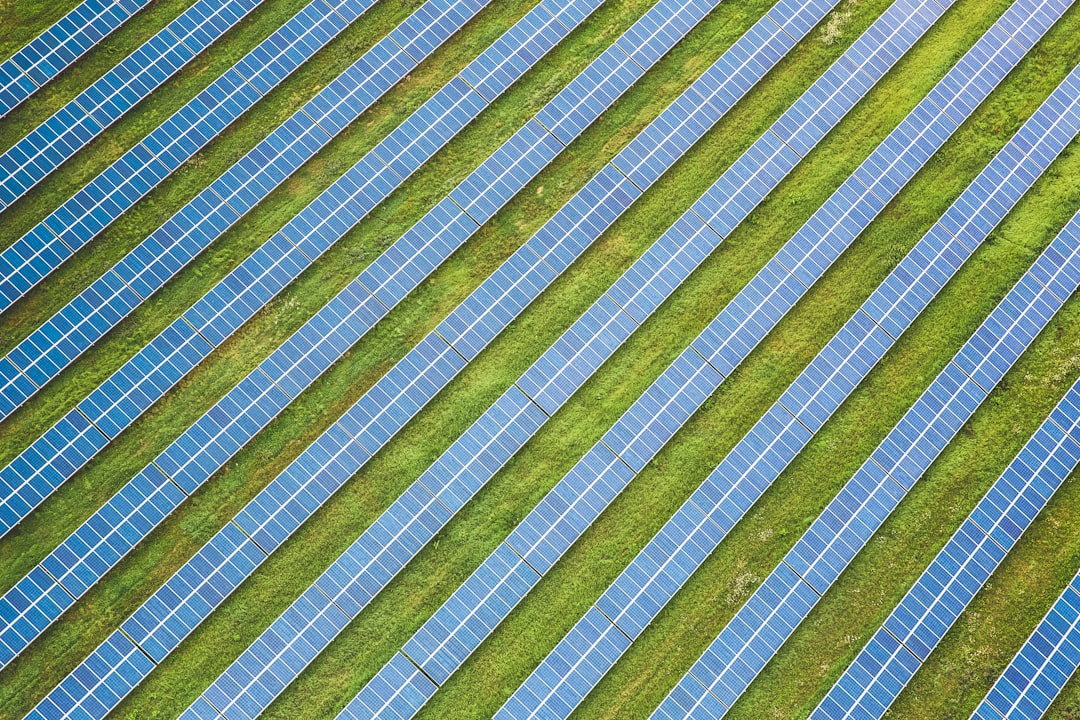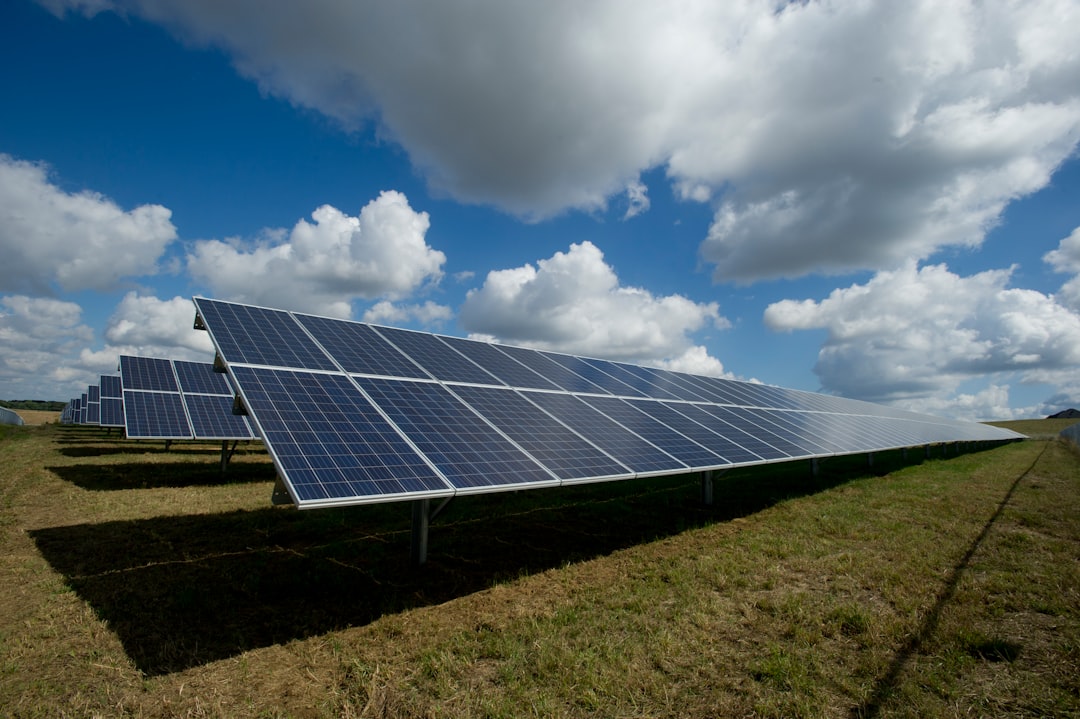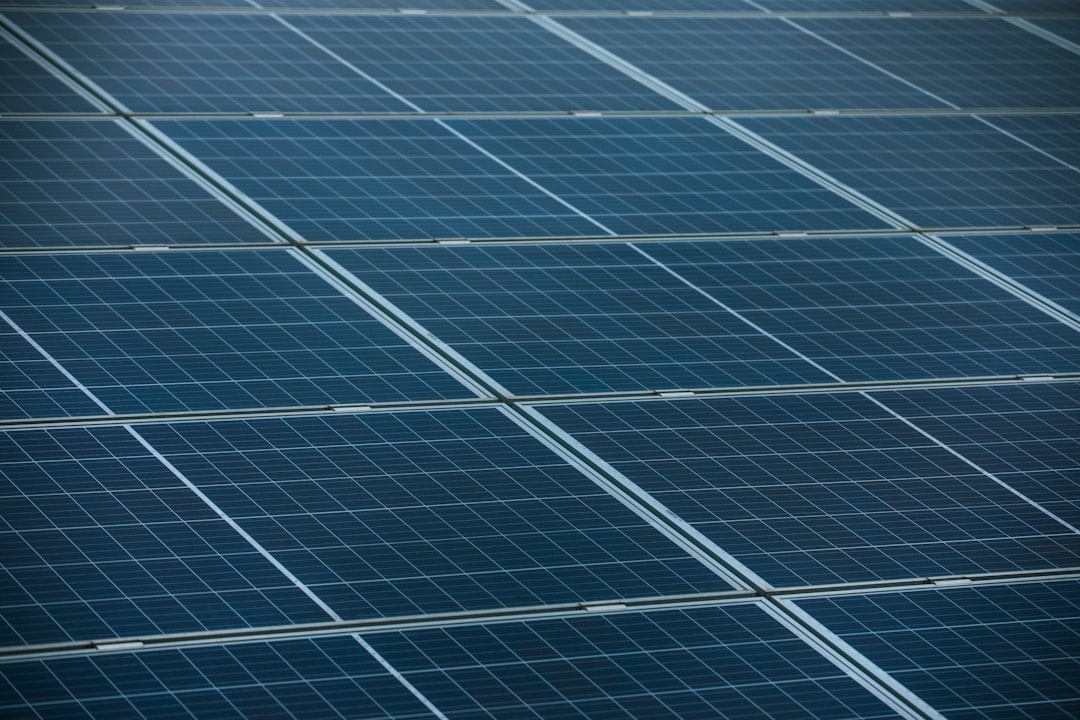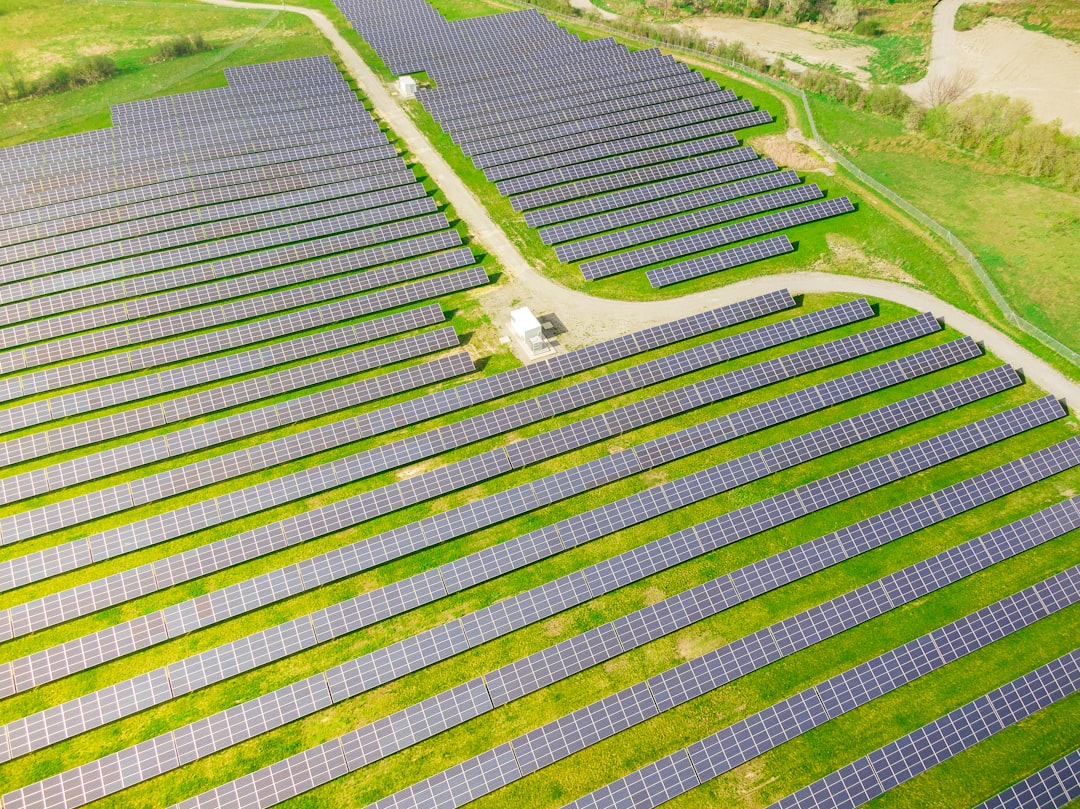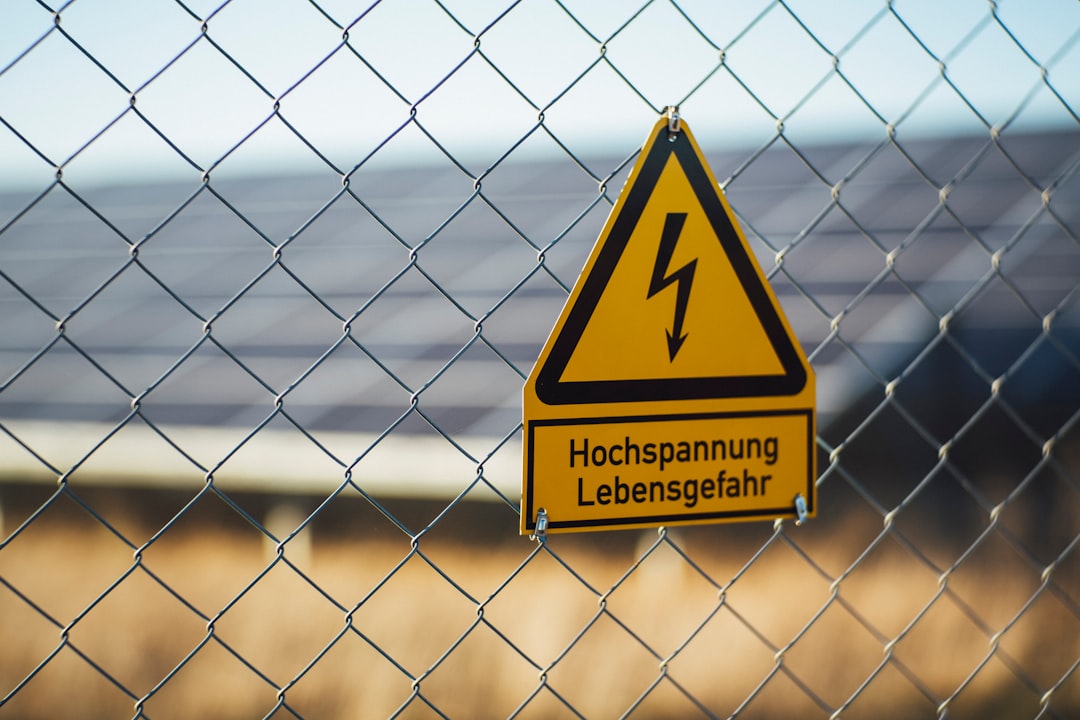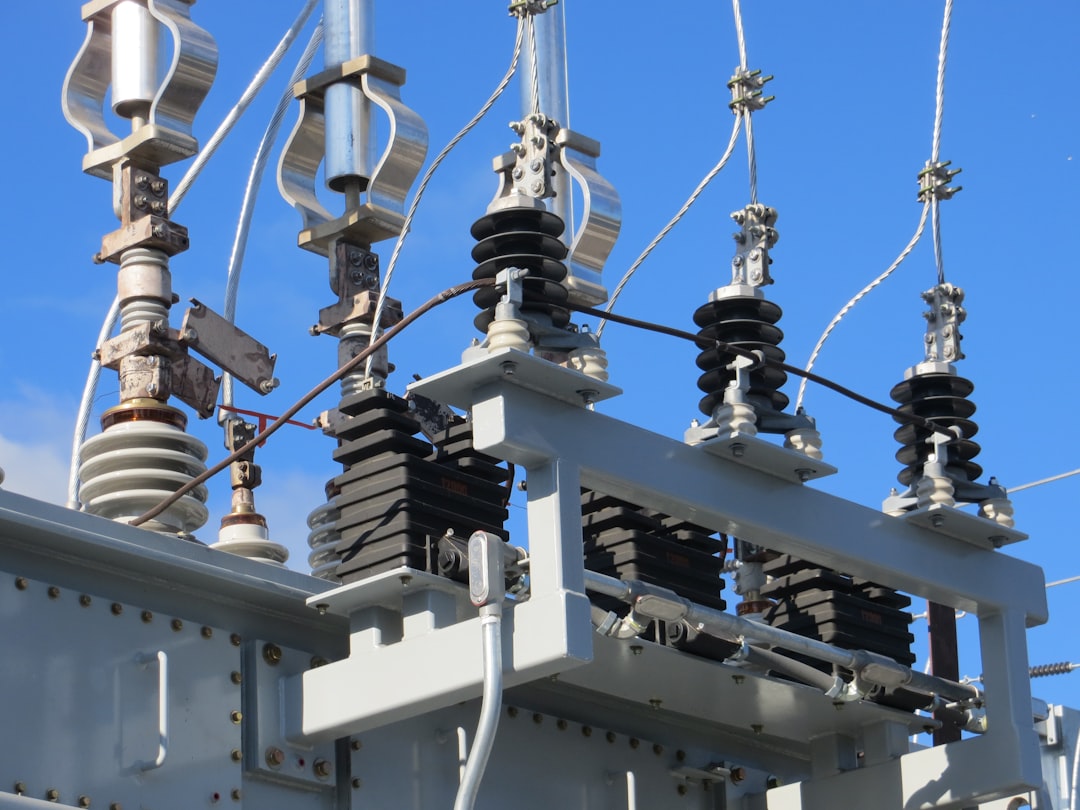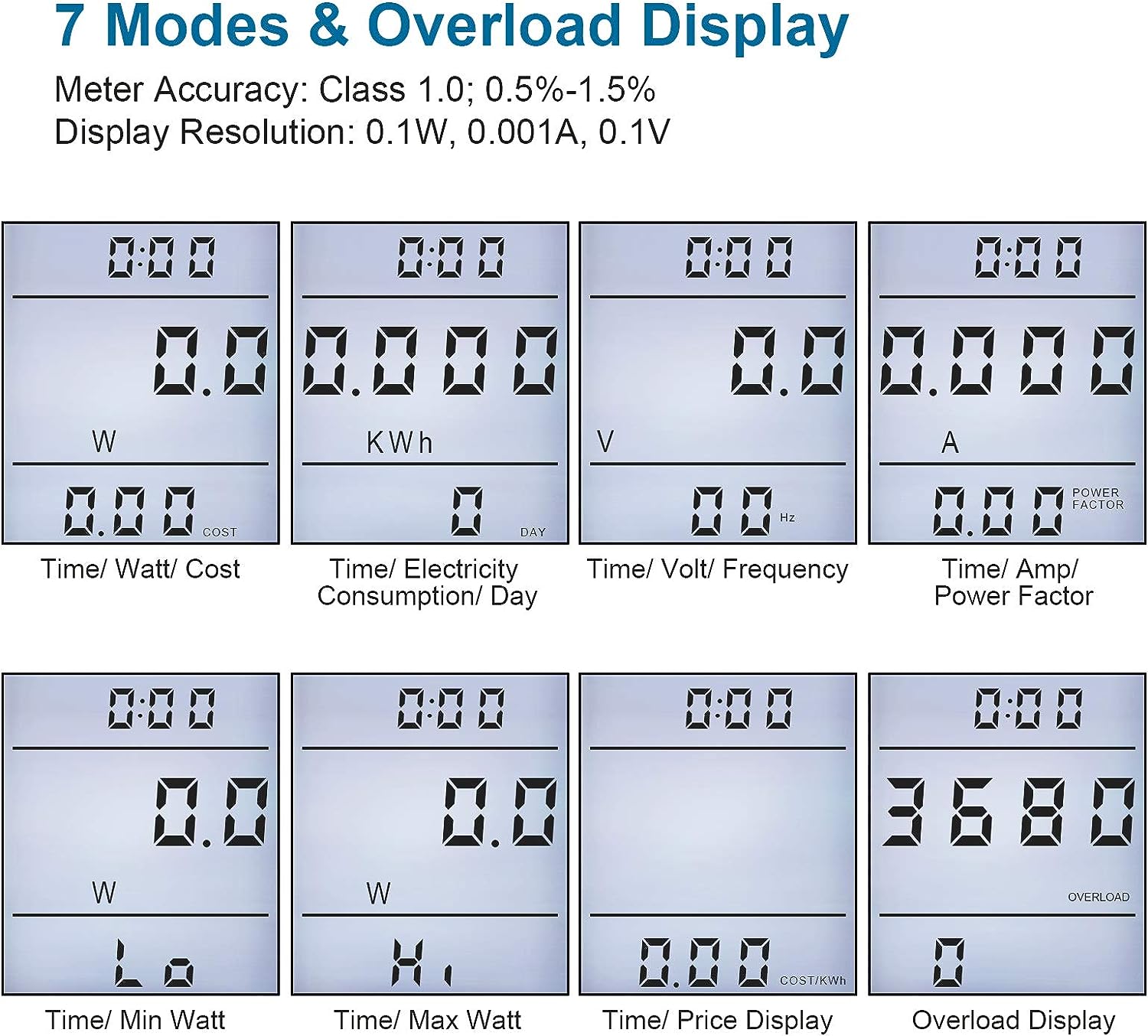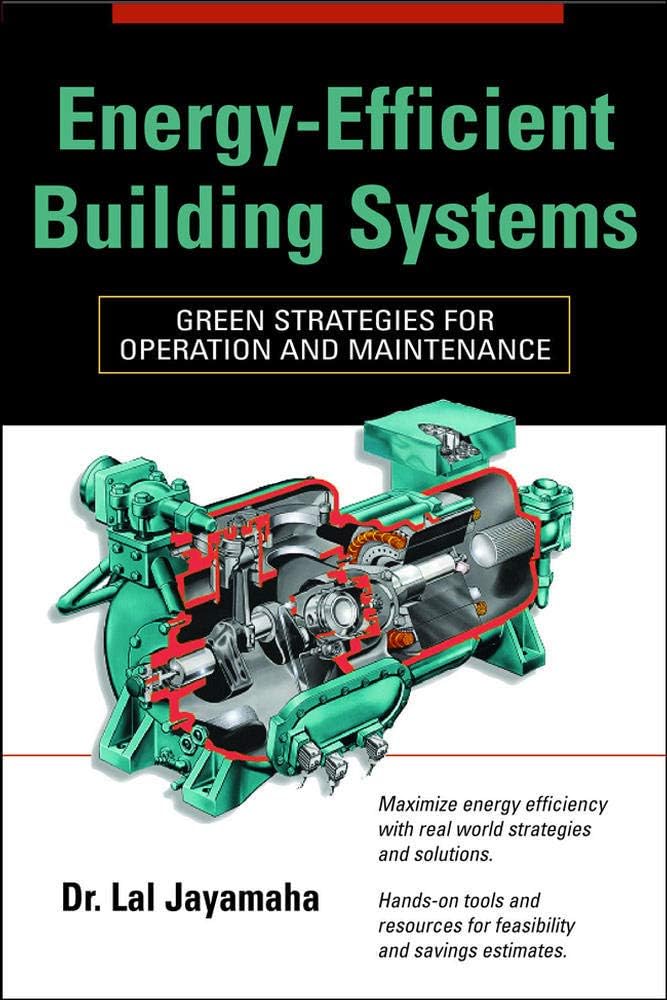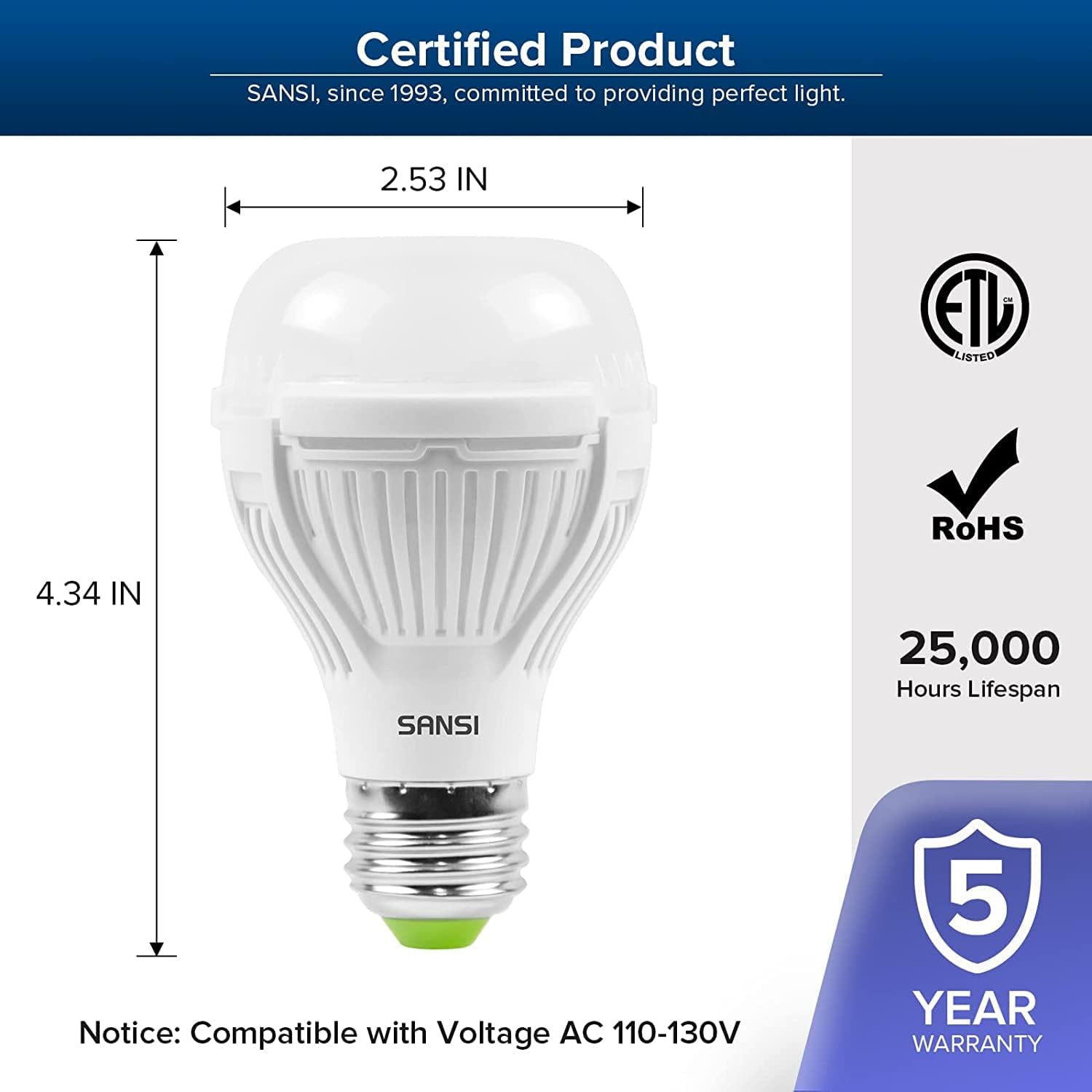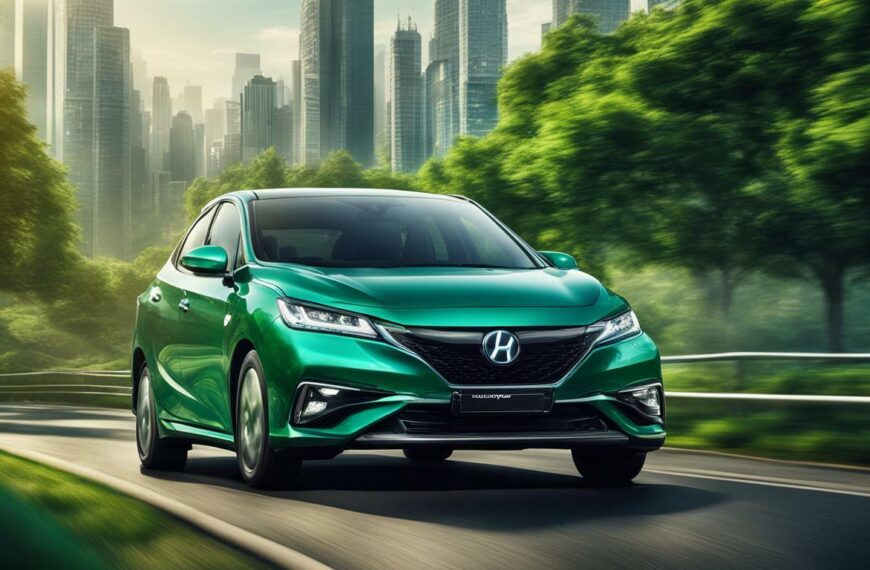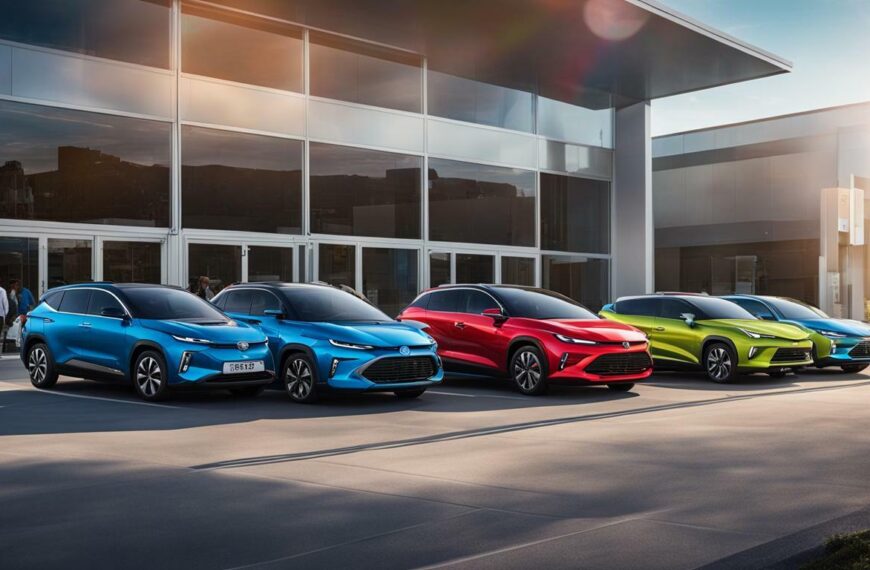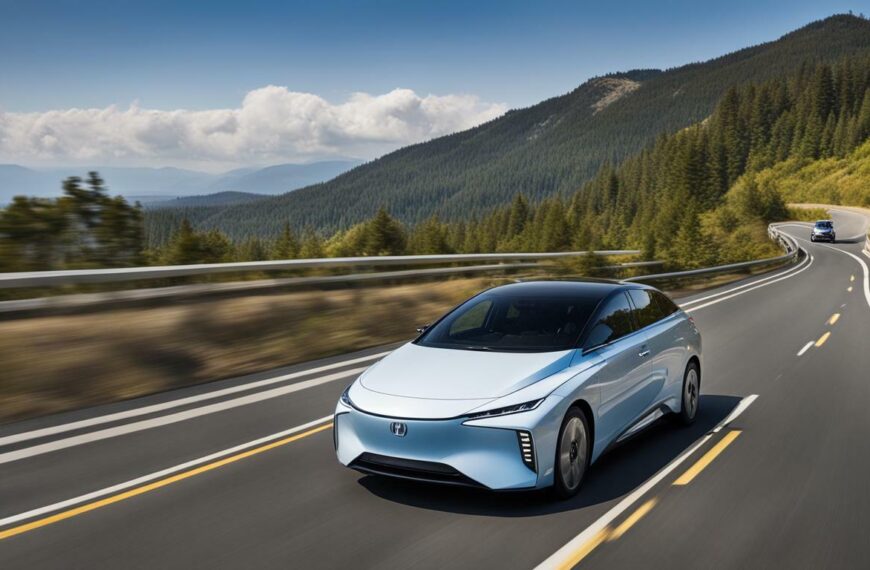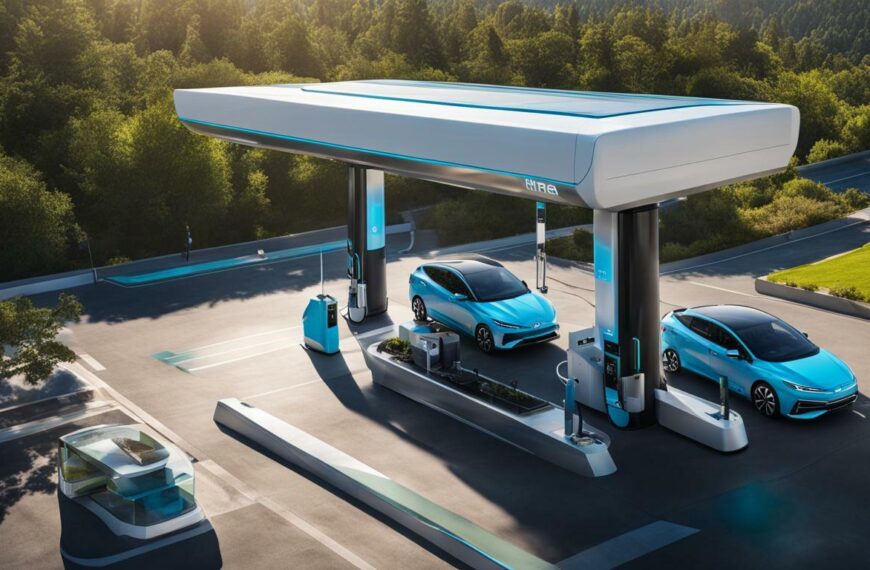Are you tired of relying on fossil fuels for your energy needs? We understand the struggle. Renewable solar energy as renewable energy is probably the best road to take on global warming.
In fact, did you know that solar power is the most abundant source of renewable energy on Earth? But unlocking its true potential can be overwhelming. That’s why we’ve done extensive research to bring you a comprehensive guide to harnessing the power of solar energy.
Get ready to discover how solar thermal conversion systems can revolutionize your energy usage. Let’s dive in!
The Main Key Takeaways
- Solar power is the most abundant source of renewable energy on Earth and can revolutionize our energy usage.
- Solar systems consist of three main components: energy collection (using solar panels), distribution, and storage (using batteries).
- The size of a solar system depends on the amount of sunlight a place receives and its energy utilization pattern.
- Solar selective surfaces are crucial in maximizing absorption of shortwave solar radiation while minimizing emission of longwave thermal radiation.
- Materials like metals (copper, nickel, aluminum) have high reflectance in infrared spectrum and minimize emission of longwave thermal radiation.
- Solar radiation spectrum refers to the range of wavelengths in electromagnetic radiation from the sun, while thermal radiation is heat emitted by objects at a certain temperature.
- Energy absorbed by absorber material gets converted into heat for various applications like electricity generation or water heating.
- Factors affecting heat loss through thermal radiation include surface temperature, emissivity, surface area, view factor, and temperature difference between surfaces.
- Low emittance is important for efficient energy collection in solar thermal systems as it reduces heat loss from the system.
- Materials like copper, nickel, aluminum contribute to selective absorption properties in solar collectors.
- “Black nickel” and “black chrome” are two types of selective absorbing surfaces used in solar energy systems.
Importance of efficient performance, low costs, robustness, and durability
Good solar systems work well, cost less, stay strong and last long. You save money when your system runs with no problems. When your system is tough and made of good stuff, it does not break down easy.
It keeps going for a lot of years without much cost to fix or replace parts. This makes the most use of clean energy from the sun that costs nothing at all!
Components include energy collection, distribution, and storage
In our solar energy systems, we use three main parts. The first part is energy collection. Here, we use items like solar panels to gather the sunlight’s power. Our panels are strong and long-lasting. They do their job well by turning the sun’s rays into usable energy.
Sizing based on solar energy resource and energy utilization pattern
We size solar systems based on two things. First, we look at the solar energy resource. This is how much sunlight a place gets. Places with more sunlight need smaller systems than those with less.
Second, we think about the energy use pattern. If a home uses a lot of power in the morning and evening, but not during the day, its solar system might need to be bigger to store extra power for when it’s needed.
These factors help us pick efficient and cost-friendly systems that last long and work well in any weather condition. We do this by choosing parts for collecting sunlight, moving it around, and storing it.
For example, if an area has a lot of sunshine all year round, then lighter solar panels can be used as they will still collect enough solar energy. On the other hand, areas that have less sun require more robust panels to make sure they capture every bit of available light.
Solar Selective Surfaces and Their Importance
Solar selective surfaces are crucial in solar energy thermal conversion systems. They play a vital role in maximizing the absorption of shortwave solar radiation, while minimizing the emission of longwave thermal radiation.
Understanding the solar radiation spectrum and thermal radiation is key to designing efficient and effective solar energy collectors.
Need for high absorption of shortwave solar radiation
We aim to get as much power from the sun as we can. For that, we must take in nearly all of its shortwave solar rays. These are the rays with lots of energy. They give us more power when they turn into heat.
This is why our tools need a high level of “absorptance“. Absorptance means how much light an item can take in and not reflect back out again. We use special surfaces for this job on our devices called solar selective surfaces.
High absorption helps us tap even more into clean, renewable energy from the sun!
Emphasis on low emission of longwave thermal radiation
In solar energy thermal conversion systems, there is a focus on minimizing the emission of longwave thermal radiation. This is important because low emission helps to increase the efficiency of energy collection.
By reducing the amount of longwave radiation that is released, more heat can be retained and utilized for various purposes. Materials like metals such as copper, nickel, and aluminum have high reflectance in the infrared spectrum, which means they are good at minimizing the emission of longwave thermal radiation.
On the other hand, nonmetallic materials with high reflectance are known as “heat mirrors” and also play an important role in reducing thermal radiation. Overall, by emphasizing low emission of longwave thermal radiation, solar energy systems can maximize their performance and effectiveness in harnessing renewable energy from the sun.
Description of solar radiation spectrum and thermal radiation
Solar radiation spectrum refers to the range of wavelengths in electromagnetic radiation that comes from the sun. The majority of solar radiation falls within the wavelength range of 0.3 to 2 micrometers (μm).
This is the range where sunlight carries most of its energy. On the other hand, thermal radiation refers to the heat emitted as infrared radiation by objects at a certain temperature, usually around 325 Kelvin (K).
Thermal radiation falls within a longer wavelength range, typically between 3.0 and 30 μm.
Understanding these different ranges is crucial for harnessing solar energy effectively. Solar selective surfaces are designed to have high absorptance in the solar spectrum and low emittance in the thermal spectrum.
Semiconductors like silicon and germanium are ideal materials for absorbing solar radiation while reflecting thermal radiation efficiently.
Metals such as copper, nickel, and aluminum have good reflectance in the infrared region but low absorption in the solar spectrum. To overcome this limitation, thin layers of materials called “heat mirrors” can be applied to these metals.
Heat mirrors have high reflectance for infrared rays while allowing effective absorption of sunlight.
Heat Balance and Energy Absorption
In this section, we will explore the concept of heat balance and energy absorption in solar energy systems. We will discuss how the absorber absorbs and retains energy from the sun while minimizing heat loss through thermal radiation.
Explanation of energy absorbed by the absorber
When solar energy is absorbed by the absorber, it gets converted into heat. The absorber material plays a crucial role in this process as it absorbs the incoming solar radiation. Semiconductors like silicon and germanium have high absorption capacity for solar radiation, making them efficient for converting sunlight into electricity in photovoltaic systems.
On the other hand, metals like copper, nickel, and aluminum reflect infrared radiation but absorb less solar radiation. Nonmetallic materials called “heat mirrors” have low solar reflectance and high infrared reflectance, making them suitable for thermal energy collection.
Heat losses from the absorber occur through conduction to surrounding materials and convection due to air movement. By understanding how energy is absorbed by the absorber, we can optimize its design and efficiency in capturing solar power for various applications.
Factors affecting heat loss by thermal radiation
There are several factors that can affect heat loss by thermal radiation in solar energy systems:
- Surface temperature: The higher the temperature of the surface, the greater the amount of heat loss through thermal radiation.
- Emissivity: Emissivity is a measure of how well a material radiates thermal energy. Materials with high emissivity will radiate more heat than those with low emissivity.
- Surface area: The larger the surface area exposed to the surroundings, the more heat can be lost through thermal radiation.
- View factor: The view factor is a measure of how much one surface “sees” another surface and vice versa. A higher view factor means more heat transfer through radiation between two surfaces.
- Temperature difference: The larger the temperature difference between two surfaces, the greater the amount of heat transfer through thermal radiation.
Importance of low emittance and its impact on energy collection
Low emittance is very important for efficient energy collection in solar thermal systems. Emittance refers to the ability of a material to radiate heat. In solar collectors, low emittance means that less heat is lost from the system, resulting in higher energy collection efficiency.
When materials with low emittance are used as selective surfaces in solar collectors, they are able to absorb and retain more of the incoming solar radiation. This increases the amount of heat transferred to the working fluid or storage medium, which can then be used for various applications such as heating water or generating electricity.
By reducing heat loss through low emittance materials, solar thermal systems can maximize their energy output and deliver greater cost savings. This is particularly important in areas with limited sunlight or during periods of high demand when every bit of energy matters.
In the quest for efficient solar energy conversion, materials play a crucial role. Discover the key materials used in solar selective surfaces and how they contribute to maximizing energy absorption.
Read on to unlock the power of solar energy!
Role of metals like copper, nickel, and aluminum
Metals like copper, nickel, and aluminum play an important role in solar selective surfaces. These metals have high infrared reflectance but low solar absorptance. To improve their solar absorptance, a thin layer of a material with high solar absorptance and good infrared transmittance is applied to the metal.
This enhances the efficiency of thermal solar energy collection. Additionally, nonmetallic materials called “heat mirrors” can be combined with a solar-absorbing substrate to create good selective properties.
Overall, these metals contribute to the effective conversion of sunlight into usable energy in solar power systems.
Introduction to “Black nickel” and “Black chrome” as selective absorbing surfaces
“Black nickel” and “black chrome” are two types of selective absorbing surfaces used in solar energy systems. These surfaces are designed to efficiently absorb solar radiation while minimizing the amount of heat that is radiated back into the atmosphere.
They are made by applying a thin layer of material with high solar absorptance and good infrared transmittance onto metals such as copper, nickel, or aluminum. This combination allows these surfaces to effectively absorb sunlight while reducing heat loss through thermal radiation.
Another option for selective absorbing materials is “heat mirrors,” which are nonmetallic materials that have high infrared reflectance and low solar reflectance. These can be combined with a solar-absorbing substrate to create excellent selective properties for efficient energy collection.”.
Overview of nonmetallic materials termed “heat mirrors”
Nonmetallic materials that are called “heat mirrors” have high reflectance for infrared radiation and low reflectance for solar radiation. These materials can be combined with a substrate that absorbs solar energy to create surfaces with selective properties.
For example, semiconductors like silicon and germanium have good reflectance in the thermal spectrum but absorb sunlight well. On the other hand, metals such as copper, nickel, and aluminum have high reflectance in the infrared range but don’t absorb much solar energy.
To overcome this limitation, a thin layer of material with high solar absorptance and good infrared transmittance is applied to these metals.
Convective Heat Transfer in Solar Energy Collectors
In solar energy collectors, convective heat transfer plays a crucial role in determining the overall efficiency of the system.
Determining heat loss by buoyancy-driven convection
Heat loss in solar energy collectors can be determined by considering buoyancy-driven convection. This is the movement of heat caused by differences in temperature and density. In the case of flat-plate collectors, the Nusselt Number, which relates to heat transfer through convection, can be calculated using the Grashof Number and Prandtl Number.
These numbers take into account factors such as fluid properties and flow conditions to estimate heat loss due to convective currents between the collector plate and the glass cover.
By understanding these principles, engineers can design more efficient solar energy systems that minimize heat loss through convection.
Correlation of Nusselt Number with Grashof Number and Prandtl Number
Convective heat transfer is an important factor in the performance of solar energy collectors. To determine the heat loss caused by buoyancy-driven convection in a flat-plate collector, we use the Nusselt Number.
This number is correlated with two other parameters: the Grashof Number and the Prandtl Number. These correlations help us understand and predict convective heat transfer in solar energy systems.
By considering these numbers, we can optimize the design and efficiency of solar collectors to harness maximum energy from sunlight.
Factors affecting internal convection
Internal convection in solar energy collectors can be influenced by several factors. These factors include:
- Surface roughness – A rough surface can enhance convective heat transfer by promoting turbulence and increasing the contact area between the fluid and the surface.
- Flow rate – Higher flow rates can increase convective heat transfer, as they promote better mixing and reduce the thickness of the boundary layer.
- Fluid properties – The physical properties of the fluid, such as viscosity and density, can affect convective heat transfer. Higher viscosity fluids tend to have lower convective heat transfer coefficients.
- Collector geometry – The design and geometry of the collector can impact internal convection. Features like fins or baffles can enhance turbulence and improve heat transfer.
- Temperature difference – A greater temperature difference between the fluid and collector surface can increase convective heat transfer through forced convection.
Types and Components of
Solar energy collectors come in various types, including water-heating flat-plate collectors, evacuated-tube collectors, and Heat Pipe absorbers. Each type has its own unique components that contribute to efficient solar energy collection and utilization.
Description of water-heating flat-plate collector
Water-heating flat-plate collectors are an important type of solar energy collector used to heat water. These collectors consist of a shallow, insulated box with a dark-colored absorber plate inside it.
The absorber plate is covered with glass or plastic to trap the sun’s heat and prevent it from escaping. When sunlight hits the absorber plate, it heats up and transfers its heat to the water flowing through pipes or tubes connected to the collector.
The heated water can then be used for various purposes like bathing, washing dishes, or heating spaces. Water-heating flat-plate collectors are commonly used in residential and commercial buildings to harness solar energy for hot water production.
Introduction to evacuated-tube collector and Heat Pipe absorber
Evacuated-tube collectors and Heat Pipe absorbers are types of solar energy collectors that play an important role in harnessing the power of solar energy. Evacuated-tube collectors use cylindrical glass envelopes to enclose each absorber fin, preventing heat loss due to convection.
On the other hand, Heat Pipe absorbers facilitate heat transfer from the collector. These components work together to maximize the efficiency of solar energy collection by minimizing heat loss.
By understanding how these collectors and absorbers function, we can unlock the full potential of solar energy as a renewable and clean source of power for our homes and businesses.
Overview of solar collector types and their range
Solar collectors come in various types and offer a wide range of options for harnessing solar energy. These collectors include:
- Water-heating flat-plate collector: This type of solar collector consists of a flat, insulated panel that absorbs sunlight and transfers the heat to water or another fluid passing through it.
- Evacuated-tube collector: These collectors consist of rows of glass tubes with inner absorber tubes. The vacuum between the inner and outer tube reduces heat loss, making them more efficient.
- Heat Pipe absorber: Heat pipes are sealed copper tubes containing a small amount of liquid that vaporizes when heated, transferring heat efficiently to the working fluid.
- Solar air heater: This type of collector uses air as the working fluid, absorbing solar radiation and heating the air for use in space heating or ventilation systems.
- Concentrating solar power (CSP): CSP technology uses mirrors or lenses to concentrate sunlight onto a receiver, which converts it into high-temperature heat for electricity generation or other thermal applications.
- Photovoltaic (PV) panels: While technically not collectors, PV panels convert sunlight directly into electricity using semiconductor materials like silicon to generate clean energy.
Efficiency and Performance of Solar Energy Collectors
Determining the useful heat gained by a solar energy collector and understanding factors that affect its long-term performance is crucial for maximizing efficiency. Explore the Hottel-Whillier-Bliss equation and other key considerations in our comprehensive guide to unlocking the power of solar energy.
Read more to delve into this important topic.
Determining useful heat gained by a collector
To determine the useful heat gained by a collector, we consider the following factors:
- Incident solar radiation: The amount of sunlight that falls on the collector surface affects the heat gain.
- Collector efficiency: This is the ratio of useful heat gain to incident solar radiation over a specific time period.
- Surface area of the collector: A larger surface area allows for more absorption of solar radiation and thus results in higher heat gain.
- Insolation: The duration and intensity of sunlight throughout the day impact the overall heat gained by a collector.
- Orientation and tilt angle: Proper orientation and tilt angle optimize the collection of solar energy, maximizing heat gain.
Introduction to Hottel-Whillier-Bliss equation for thermal performance
The Hottel-Whillier-Bliss equation is an important tool used to measure the performance of solar energy collectors. This equation helps us understand how efficiently a collector can convert sunlight into usable heat.
It takes into account factors like how much solar radiation is absorbed by the collector and how much thermal radiation it emits. By using this equation, we can evaluate the effectiveness of different types of solar energy collectors and make improvements to increase their efficiency.
Factors affecting long-term performance of solar-heating collectors.
Solar-heating collectors can be affected by several factors that impact their long-term performance. Here are some key considerations to keep in mind:
- Maintenance: Regular upkeep and cleaning of the collector system is essential for optimal performance. Dust, debris, and other contaminants can accumulate on the surface, reducing its efficiency over time.
- Corrosion: Exposure to moisture and harsh environmental conditions can cause corrosion of the collector’s components, including the absorber plate and piping. Using corrosion-resistant materials and implementing proper protective measures can help mitigate this issue.
- Thermal degradation: High temperatures and prolonged exposure to sunlight can lead to degradation of materials used in the collector system, such as seals, glazing, insulation, and absorber coatings. Selecting durable and high-quality materials can enhance the longevity of the system.
- Shading: The presence of shading from nearby structures or vegetation can significantly reduce the amount of solar radiation reaching the collector’s surface. Proper placement and regular monitoring of shading patterns are crucial to maintain optimal sunlight exposure.
- System design: A well-designed solar-heating collector system takes into account factors such as sizing, orientation, tilt angle, fluid flow rates, and heat transfer capabilities. Ensuring an efficient design from the outset can maximize long-term performance.
- Freeze protection: In colder climates, freeze protection measures must be implemented to prevent damage caused by freezing water within the collector or piping system. This may involve using antifreeze solutions or implementing drainback systems.
- Climate variability: Climate conditions (e.g., temperature fluctuations, seasonal variations in sunlight intensity) can impact the overall performance of solar-heating collectors. Incorporating appropriate control strategies based on local climate data helps optimize energy output throughout the year.
Materials for Solar Energy Collectors
In this section, we will discuss the characteristics of a good absorber material and highlight the importance of cover materials with high transmittance and low heat absorptivity. Additionally, we will provide an overview of glass and plastics as potential cover materials for solar energy collectors.
Characteristics of a good absorber material
A good absorber material for solar energy should have certain characteristics. It needs to have high solar spectrum absorptance, meaning it can efficiently absorb sunlight. At the same time, it should have a low emittance in the thermal spectrum, which means it doesn’t release heat easily.
Metals like copper, nickel, and aluminum are commonly used as they reflect infrared light but absorb solar radiation. Semiconductors like silicon and germanium are also effective absorbers.
Nonmetallic materials called “heat mirrors” reflect infrared light while allowing solar radiation to be absorbed. It is also possible to apply a thin layer of material with high solar absorptance and good infrared transmittance onto metals with high infrared reflectance.
Importance of cover material with high transmittance and low heat absorptivity
The cover material used in solar energy collectors plays a crucial role in their efficiency and performance. It is important for the cover material to have high transmittance, which means it allows a large amount of sunlight to pass through.
This allows more solar radiation to reach the absorber and be converted into heat energy. At the same time, the cover material should have low heat absorptivity, meaning it does not absorb much of the heat generated by this process.
By minimizing heat absorption, less energy is lost and more is available for use. Therefore, selecting a cover material with these characteristics is essential for optimizing the collection of solar energy in an efficient and cost-effective manner.
Overview of glass and plastics as cover materials
Glass and plastics are commonly used as cover materials for solar energy collectors. These materials play an important role in trapping solar energy and preventing heat loss. Here are some key points about glass and plastics as cover materials:
- Glass is a popular choice due to its transparency and ability to withstand high temperatures. It allows sunlight to pass through while minimizing heat transfer. Tempered glass is often used for its strength and durability.
- Plastics, such as polycarbonate or acrylic, are lightweight and resistant to shattering. They can be more cost-effective than glass but may have lower transparency and durability.
- Cover materials need to have high transmittance for solar radiation, allowing sunlight to enter the collector efficiently.
- At the same time, cover materials should have low heat absorptivity to minimize unwanted heat gain.
- The choice of cover material depends on factors such as cost, performance requirements, climate conditions, and desired lifespan of the solar energy system.
Solar Ponds as Solar Energy Collectors and Heat Stores
Solar ponds, which are salt-gradient and nonconvecting systems, play a crucial role in harnessing solar energy as collectors and heat stores. The stability of the salt gradient within these ponds is influenced by various factors that need to be considered for optimal performance.
Introduction to salt-gradient, nonconvecting solar ponds
Salt-gradient, nonconvecting solar ponds are a type of solar energy collector and heat store. These ponds use the principle of salt stratification to capture and store heat from the sun.
The pond is divided into three zones: an upper-convecting zone, a nonconvecting zone, and a lower-convecting zone. In the nonconvecting zone, there is a stable salt gradient that traps heat in the lower regions of the pond.
This allows for efficient collection and storage of thermal energy. By harnessing this technology, we can unlock the power of solar energy and utilize it as a renewable source for heating purposes.
Factors affecting the stability of the salt gradient in solar ponds
The stability of the salt gradient in solar ponds can be affected by several factors. Here are some important ones to consider:
- Overall salinity difference: The difference in salt concentration between the top and bottom layers of the pond plays a role in maintaining a stable salt gradient.
- Internal convection currents: Convection currents within the pond can disrupt the salt gradient. These currents are caused by temperature differences and can lead to mixing of the saltwater.
- Growth of the upper convective zone: If the upper convective zone, where mixing occurs, grows too large, it can disrupt the stability of the salt gradient.
- Salt diffusion rate: Salt slowly diffuses upwards in a solar pond over time. This natural process can affect the stability of the gradient if not properly managed.

Solar Water Heaters: Active and Passive Systems
Solar water heaters can be categorized into two types, active and passive systems.
Differentiation between active and passive solar water heaters
Active and passive solar water heaters are two types of systems that harness the power of the sun to heat water. The main difference between them lies in how they circulate the water or heat transfer fluids.
Active solar water heaters use pumps or fans to move the water, while passive systems rely on natural convection or thermosiphoning. Active systems generally have higher installation and maintenance costs, but they offer greater control over temperature and flow rates.
On the other hand, passive systems are simpler in design and operation, making them more suitable for smaller residences.
Overview of thermosyphon solar water heaters
Thermosyphon solar water heaters are a type of solar water heating system that aims to provide efficient performance while keeping costs low. These systems are designed to be robust and durable, ensuring that they can withstand various weather conditions.
The thermosyphon design allows for the natural circulation of water without the need for pumps or other mechanical devices. This makes these systems simple and reliable, requiring minimal maintenance.
Thermosyphon solar water heaters use the heat from the sun to warm up water, making them an environmentally friendly option for heating water in homes and businesses.
Introduction to integral passive solar water heaters and their history
Integral passive solar water heaters are a type of solar water heating system that aims to provide efficient and cost-effective performance. They have been designed with durability and robustness in mind, ensuring they can withstand various weather conditions.
These systems are an important part of solar energy thermal conversion systems, which include components for energy collection, distribution, and storage. The history of integral passive solar water heaters dates back several decades when researchers started exploring ways to harness the sun’s energy to heat water.
Since then, advancements have been made to improve their efficiency and make them more accessible for residential and commercial use.

Analytical Performance Prediction of Solar Energy Water Heaters
Learn how to accurately predict the performance of solar energy water heaters and optimize their efficiency.
Approaches to predict the performance of solar energy water heaters
To predict the performance of solar energy water heaters, there are several approaches that can be used. These approaches help to determine how efficient the water heaters will be in converting solar energy into usable heat. Here are some common methods:
- Mathematical Models: Using mathematical equations and computer simulations, engineers can create models to predict the performance of solar energy water heaters. These models take into account factors such as solar radiation, temperature differentials, and heat transfer rates to estimate how much heat the system will generate.
- Experimental Testing: Another approach is to conduct physical tests on prototypes or existing systems to measure their performance under real-world conditions. Engineers can use data collected from these tests to validate and refine their mathematical models.
- Performance Standards: Regulatory bodies and industry organizations often establish performance standards for solar energy water heaters. These standards specify criteria that a system must meet in terms of efficiency, durability, and reliability. By assessing whether a water heater meets these standards, one can predict its overall performance.
- Data Analysis: By analyzing historical data from similar systems and installations, it is possible to make informed predictions about the performance of a new or proposed solar energy water heater. This approach relies on comparing variables such as geographical location, system size, design specifications, and maintenance practices.
- Solar Energy Software: There are also software programs available that utilize algorithms and databases of historical weather patterns and equipment specifications to predict the performance of solar energy systems accurately.
Solar Drying: Using Solar Energy for Agricultural Products
Solar drying is an innovative method that utilizes solar energy to remove moisture from agricultural products, ensuring their preservation and reducing spoilage.
Objective of drying agricultural products
Our objective in drying agricultural products using solar energy is to achieve efficient and cost-effective performance. We aim to ensure that the drying process is robust and durable.
By harnessing the power of solar energy, we can dry agricultural products in a sustainable and environmentally friendly way. This helps to reduce dependence on traditional drying methods that may be costly or harmful to the environment.
Through solar drying, we can preserve the quality of agricultural products while also promoting energy efficiency and contributing to a more sustainable future for our agricultural industry.
Introduction to solar drying methods and their requirements
Solar drying methods are a way to use the power of the sun to dry agricultural products. It is important to understand the different methods and what they require. Here are some key points about solar drying methods and their requirements:
- Solar drying methods aim to utilize solar energy for drying agricultural products.
- These methods require efficient and low – cost thermal conversion systems.
- Components for energy collection, distribution, and storage are essential in solar drying systems.
- Solar selective surfaces with high solar spectrum absorptance and low thermal emittance are necessary for efficient thermal energy collection.
- Convective heat transfer plays a significant role in determining heat loss in solar energy collectors used for drying.
- Solar drying methods can utilize both concentrating and flat – plate solar energy collectors.
Overview of generic solar dryers
Solar dryers are a type of drying method that uses sunlight to remove moisture from agricultural products. They work by harnessing the heat energy from the sun and using it to evaporate the water content in crops, fruits, and other agricultural produce.
Solar dryers are designed with ventilation systems that allow air circulation, ensuring even drying throughout the product. These dryers can vary in size and design but generally consist of a collector or absorber where solar radiation is converted into heat, a drying chamber where the produce is placed for drying, and an exhaust system for removing humid air.
The use of solar dryers offers several advantages such as reduced dependence on fossil fuels, lower energy costs, improved product quality due to controlled drying conditions, and increased shelf life of agricultural products.
Solar Refrigeration: Converting Solar Energy into Cooling
Solar refrigeration utilizes solar energy to power cooling systems, providing an eco-friendly and efficient alternative to traditional electrical refrigerators. Learn more about this innovative technology and how it can contribute to a sustainable future.
Using solar energy to operate conventional electrical refrigerators
One way to harness the power of solar energy is by using it to operate conventional electrical refrigerators. This can be achieved through solar energy thermal conversion systems, which include components for energy collection, distribution, and storage.
To ensure efficient performance, solar selective surfaces are used to maximize thermal energy absorption while minimizing heat loss. Semiconductors like silicon and germanium are commonly employed in these systems.
Additionally, metals such as copper, nickel, and aluminum can be utilized but require a thin layer of material with high solar absorptance and good infrared transmittance. By utilizing solar energy in this way, we can reduce our reliance on traditional sources of electricity and contribute to a cleaner and more sustainable future.
Introduction to solar operated refrigerators with high temperature solar energy collectors
Solar operated refrigerators with high temperature solar energy collectors are an innovative solution that allows for cooling without relying on electricity from the grid. These refrigerators utilize solar energy to power their operations, making them a sustainable and environmentally friendly option.
The high temperature solar energy collectors are designed to capture and convert sunlight into usable heat at elevated temperatures, which is then used to drive the refrigeration process.
This technology provides an alternative to conventional electrical refrigerators, reducing dependence on fossil fuels and lowering greenhouse gas emissions. Solar operated refrigerators have the potential to greatly benefit remote areas or regions with limited access to electricity, as they can operate independently and efficiently using renewable solar power.
Why Need Protection from Western Power Grabs in Solar Energy
The Imperative of Utility-Scale Solar
In the realm of sustainable energy, utility-scale solar stands out as a beacon of hope for many developing nations. The Department of Energy, along with various international bodies, has consistently highlighted the transformative potential of energy technologies, especially solar farms. These vast expanses of solar panels not only symbolize the future of energy generation but also represent a promise of self-reliance for poorer nations.
However, as these countries strive to install solar systems and go solar, they face a myriad of challenges. One of the most pressing is the power grab by western nations. The west, with its advanced solar energy technologies, often seeks to dominate the solar sector in developing countries, sidelining local efforts.
The Promise of Solar Energy
Solar farms, when efficiently managed, can produce electricity enough to power entire cities. The benefits of solar energy are manifold. From reducing carbon footprints to providing a reliable source of energy, solar has it all. Solar and wind, combined, are paving the way for a cleaner, greener future. Utility-scale solar PV, in particular, has the potential to revolutionize electrical energy production.
Solar power plants, equipped with advanced solar photovoltaics, harness energy from the sunlight. This energy creates electrical charges, which are then converted into usable power. Distributed solar, another form of solar energy, allows individual households to produce electricity, reducing their dependence on the national power grid.
The Cost and Demand Dynamics
While the cost of solar energy has been decreasing, making it more accessible to the masses, the demand for renewable energy, especially in developing nations, has been on the rise. Every day, an immense amount of energy from the sun falls on the earth. To put it in perspective, the energy from the sun that falls on the earth in one hour is more than what the entire world uses in a year.
Yet, despite the potential, many poor countries find it challenging to harness this energy effectively. They often lack the infrastructure to install solar panels on a large scale. Moreover, the national renewable energy policies in these countries might not be robust enough to support large-scale solar projects.
FAQs
What is renewable energy?
Renewable energy refers to power generation technologies that harness naturally occurring resources like sunlight and wind to produce clean electricity. These sources, like solar and wind power, are abundant and can be used to generate electricity without depleting finite resources.
What is solar power and how does it work?
Solar power, also known as solar photovoltaic (PV) or solar energy, is a clean energy source that utilizes solar cells to convert sunlight into electricity. Solar technologies, such as rooftop solar installations and utility-scale solar power stations, harness solar irradiation to generate power.
How does wind power contribute to renewable energy?
Wind power is another renewable energy source that captures the kinetic energy of wind to turn turbines and generate electricity. Wind energy can be harnessed through wind power technologies, and wind and solar are often used together to diversify clean electricity generation.
What are the benefits of solar energy?
Solar energy offers numerous advantages, including clean electricity production, reduced greenhouse gas emissions, and the ability to sell excess power back to the grid through net metering. It is a key component of clean energy systems used by everyone, from residential solar users to large-scale solar farms.
What is Concentrating Solar Power (CSP)?
Concentrating Solar Power (CSP) is a solar thermal technology that concentrates sunlight to produce high-temperature heat. This heat is then used to generate electricity through steam turbines, making CSP power a valuable clean energy source, especially in areas with high solar irradiation.
How do renewable energy certificates work?
Renewable Energy Certificates (RECs) represent the environmental benefits of clean electricity generation from renewable sources like solar and wind. They can be bought and sold to demonstrate the use of clean energy and support its growth, helping reduce the overall cost of electricity.
Can solar systems generate more electricity than is used?
Yes, solar systems, whether residential or utility-scale, often generate more electricity during sunny hours than is consumed. This excess power can be fed back to the grid and used to offset energy consumption during times when sunlight is unavailable.
Is solar heating considered a renewable energy source?
Yes, solar heating is a renewable energy source that uses sunlight to provide heat for residential and commercial purposes. It is a clean energy alternative for space heating and hot water systems.
How does clean electricity from renewable sources get back to the grid?
Clean electricity generated from renewable sources, such as solar and wind power technologies, can be easily integrated into the grid. It is typically connected through power stations and individual solar installations, allowing excess energy to flow back to the grid when needed.
What is the largest renewable energy source in the U.S.?
The largest renewable energy source in the U.S. is wind power, closely followed by solar power. These clean energy sources contribute significantly to reducing the cost of electricity and promoting a sustainable energy future for the nation.
